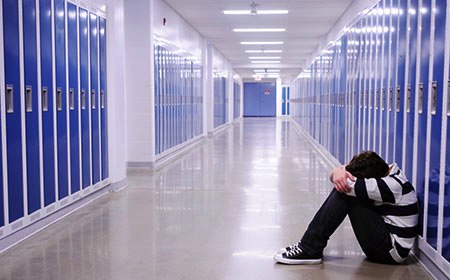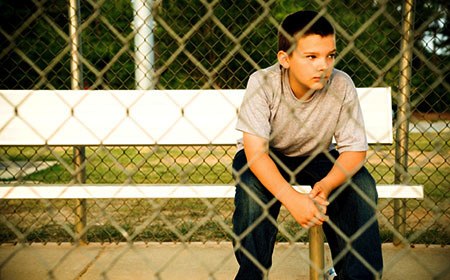

| Visitors Now: | |
| Total Visits: | |
| Total Stories: |

| Story Views | |
| Now: | |
| Last Hour: | |
| Last 24 Hours: | |
| Total: | |
10 Telling Psychology Studies On the Nature of Bullying
Yet while bullying is doubtless a major problem and one that should be addressed with the utmost seriousness, the reality is that many who are speaking out against it and proposing legislation on it really know little about the psychological and sociological research that has been done on the subject. While some stereotypes about bullies and their victims have proven true, other studies demonstrate that a more measured approach to bullying may be more effective than current punishment-focused programs as student motivations and definitions of bullying don’t always fit neatly into adult ideas about the topic. Bullying is a highly emotional issue and always will be, but these studies only serve to further demonstrate the importance of taking the time to apply reason and solid research data to any decisions that may have long-term effects on America’s children rather than letting emotions, however valid, be the guide.
Children who bully also have problems with other relationships.
Bullying may be a sign that a child is having difficulty with other areas of life as well, not just relating to their peers. A study released in 2008 found that students who bully tend to have difficulties in relationships with teachers and parents as well. These difficulties were found to stem from generally aggressive behavior and a less well-defined moral compass. Students who bully, researchers found, may be lacking in social and problem-solving skills, which makes it difficult for them to form long-lasting, non-combative relationships with those around them. The findings led researchers to conclude that a real long-term solution to bullying may lie in helping children develop these skills, involving parents and their peers, and promoting healthy relationships early in life before more serious and potentially more dangerous social and emotional issues emerge later on.
Bullying behaviors are learned and practiced at home.
While some students may simply have a more aggressive personality, studies are showing that many of the behaviors related to bullying are learned at home from interactions with parents. A review of international research in 2008 found that children raised by authoritarian parents — those who are demanding, directive, and unresponsive — are the most prone to bullying behavior, often modeling their behaviors at school on abusive, hostile, and aggressive experiences at home.
Social desires drive both bullying and other children’s reactions to it.
Those who want to reduce bullying often ignore a key factor: what makes kids want to bully others in the first place. Luckily, research hasn’t ignored this aspect of the behavior. A Dutch study found that bullies are most often driven by the desire to attain status and win the affections of their peers, desires nearly all students share. Yet what differentiates bullies from their peers is the use of dominance to attain these ends. Researchers found that bullying was a risky behavior, with a high chance of ending up on the outs with other classmates, which is why bullies so frequently focus their torments on children who are viewed as being weak or who are not well-liked by other classmates.
Some bullying stems from a desire to maintain control.
While having social “norms” may be part of human nature, it also may help motivate many students to engage in bullying behavior. A study from Concordia University found that students who are loners or who are antisocial are more frequently bullied at school. Researchers believe this is a way to help control renegades, establish social order, and to keep a group’s members under control. It all may sound a bit Draconian for grade school, but researchers found that it was quite common for children to use aggressive behavior to gain social status and dominance over their peers, within the group and outside the group, deciding who and what was acceptable. William Bukowski, who led the study, says this information can help prevent victimization in the classroom. He recommends creating classroom environments that are egalitarian and encouraging more introverted students to speak up and assert themselves.
Poor problem-solving skills increase children’s risk of becoming both a bully and a victim.
Anti-bullying activists should take note: researchers have found that poor problem solving skills are a key factor (if not the key factor) in much of the bullying that goes on in today’s schools. Research published by the American Psychological Association showed that children and adolescents who lack social problem-solving skills are at a higher risk of becoming bullies, victims, or both. For bullies, poor social skills often stem from conflict and poor parenting at home, negative attitudes about school, and poor self-image. For victims, risk factors and results were often very similar, a result that might be surprising to many. The authors of the study point out that successful anti-bullying strategies should be focused on more than just punishment, instead targeting risk factors and environments that may lead to bullying in the first place, both at home and at school.
Students and parents may define bullying differently.
Students and their parents may have divergent views on what bullying is and what causes it, according to some recent studies. A 2009 study at Indiana University found that researchers and students differed in a key way in how they defined bullies. Students tended to be more forgiving in their labels, believing that there was no strict dichotomy between bullies and non-bullies. This was especially true when evaluating themselves, as students who admitted to engaging in bullying behavior didn’t seem themselves as bullies because of other, more positive aspects of their social lives. This, researchers caution, is why many anti-bullying messages don’t get through to students, as those who don’t see themselves or their peers as bullies often disregard anti-bullying messages.
Even popular, well-liked students get bullied.
While bullying is more common among students who are on the fringes of social groups, popular students aren’t exempt from being picked on by bullies. A study in 2008 found that in cross-gender bullying, it was common for unpopular boys to harass and bully popular girls, especially as students move through elementary and middle school. Between fourth and sixth grade, researchers found that it wasn’t just the popular students that were doing the bullying; quite the opposite, in fact, when the bullying occurred across the genders. The research is telling, and those who conducted the study say it should be a wake-up call to teachers and administrators who often overlook claims of harassment by students who seem to be popular and well-adjusted.
Cyberbullying operates differently than traditional bullying.
It’s tempting to lump all bullying together, but researchers say that online bullying should truly be a separate category of bullying and dealt with differently than traditional bullying. University of British Columbia researchers compared the two and found that the dynamics of online bullying are unique, with students not seeing their actions online in the same light as their actions in real life. This shouldn’t necessarily be surprising as numerous incidents have shown that young people often don’t understand the real-life consequences that can accompany the things they say, do, and share online. Traditional power differentials, like size and popularity, don’t apply online, leaving all students as fair game to be bullied or to become bullies. As a result of this study, researchers believe that anti-bullying programs need to take a two-pronged approach to bullying that addresses cyberbullying as a separate and unique challenge.
Children begin bullying and being bullied as soon as they are old enough to engage in social interactions.
Parents, teachers, and activists need to take note: it’s never too early for bullying to occur. Researchers found that as soon as children are able to interact socially, many become entrenched in patterns of victimization or bullying. Victims are more likely to be those who were aggressive in infancy, subjected to harsh parenting styles, or from low-income homes. As children age, those who experienced bullying in their formative years are more likely to continue to be the victim, raising levels of depression, low self-esteem, social withdrawal, suicidal intention, and loneliness.
Most anti-bullying programs aren’t effective.
Sadly, while bullying remains a major problem in schools around the nation, most programs created to combat it are woefully ineffective, or so says much of the research on the subject. A study in 2004 found that 86% of victims of bullying reported negligible or negative results from reporting bullying. Other studies suggest even higher numbers. So what’s wrong with the current programs? Most focus on punishment and isolation, which have proven to be very ineffective ways to get students to modify their behavior.
Contacts and sources:
Helen Olson
http://oedb.org/library/beginning-online-learning/10-telling-psychology-studies-on-the-nature-of-bullying
Read more at Nano Patents and Innovations
Source:


